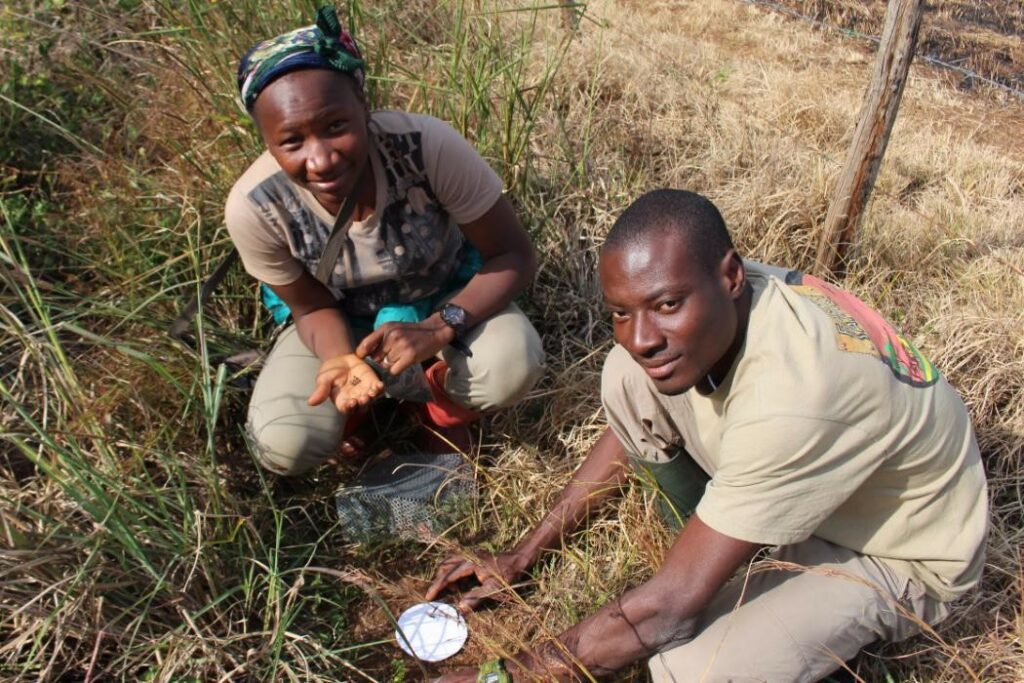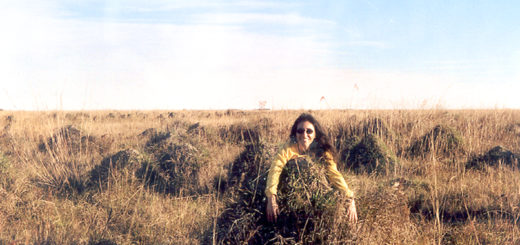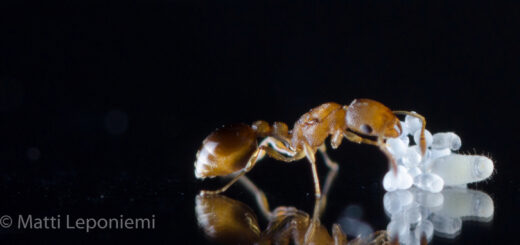Seed dispersal of non-myrmecochorous diaspores in a West African montane landscape

In the recent article “Interactions between ants and non-myrmecochorous diaspores in a West African montane landscape” published in the Journal of Tropical Ecology, Jennifer A. Agaldo, Alexander V. Christianini, and Hazel M. Chapman observed seed dispersal of non-myrmecochorous diaspores. The authors conducted assays on seed movement conducted by ants, and they measured the distance travelled with seeds across a forest-edge-grassland gradient. Moreover, they investigated whether seed cleansing improved plant fitness. They revealed that two out of 17 ant species interacted with 10 species of diaspores and that cleaned seeds germinated more quickly and had longer shoot length compared with not-cleaned seeds. Here, first author Jennifer Agaldo answers some questions and shares some pictures.
An Interview compiled by Alice Laciny, Patrick Krapf, and James Trager

MNB: Could you tell us a bit about yourself?
JAA: I was born and raised in the Jos-Plateau of central Nigeria and I grew up with a strong connection to the nature around me. I went on to study Conservation Biology and became increasingly interested in the interactions between plants and animals. I also love to travel and have had the opportunity to travel and explore different parts of the world. When I am not working, I enjoy spending time travelling with my family, spending time playing or listening to music, reading, or going on nature walks.
MNB: Could you briefly outline your recently published article in layman’s terms?
JAA: This study sought to fill the existing knowledge gap of ant-seed interactions in the Afrotropics and the nature of those interactions. The study area is part of the West African montane forest regions where some large forest trees produce small seeds mostly known to be dispersed by vertebrates (birds and monkeys). Habitat loss and degradation have led to a decline in the populations of most vertebrate dispersers, as such, investigating if ants might play a role as dispersers of seeds was explored.
We found that out of the 17 ant species identified to occur in the study area, only two species interacted with seeds from 10 plants species not known to be adapted to dispersal by ant (non-myrmecochorous). Interactions involved seed cleaning on the spot of larger seeds and seed removal to the nest for smaller seeds. Seed cleaning was observed to be beneficial to plants as it led to faster seed germination and faster-growing seedlings than uncleaned seeds. However, seeds were moved to only a maximum of 1.2m from the point they were picked. This showed that ant seed dispersal in Afromontane forest may be less significant than seed cleaning.
MNB: What is the take-home message of your work?
JAA: The take-home message is that ants in the Afrotropics do interact with seeds and such interactions do not appear to be specialized. They are not likely to play a major role in seed dispersal in Afromontane forests. However, by cleaning seeds on the forest floor, ants can enhance the rate of seed germination and seedling growth.
MNB: What was your motivation for this study?
JAA: One of the main motivations for this study was finding out that there has been no study on ant-seed interactions in sub-Saharan Africa. Most African forests have high ant species abundance and not much has been done to understand their interactions with the environment.
MNB: What was the biggest obstacle you had to overcome in this project?
JAA: The biggest obstacle was the lack of baseline data on ant species composition in most of sub-Saharan Africa. Moreover, there are not many ant-taxonomists in sub-Saharan Africa. Also, it is difficult to get funding for ecological research on ants.
MNB: Do you have any tips for others who are interested in doing related research
JAA: There is a lot to discover about ants. Find your interest in ant research and pursue it.
MNB: Where do you see the future for this particular field of ant research?
JAA: With accessible funding, the ecological role of ants in sub-Saharan grassland and forest habitats will be better understood.





Recent Comments